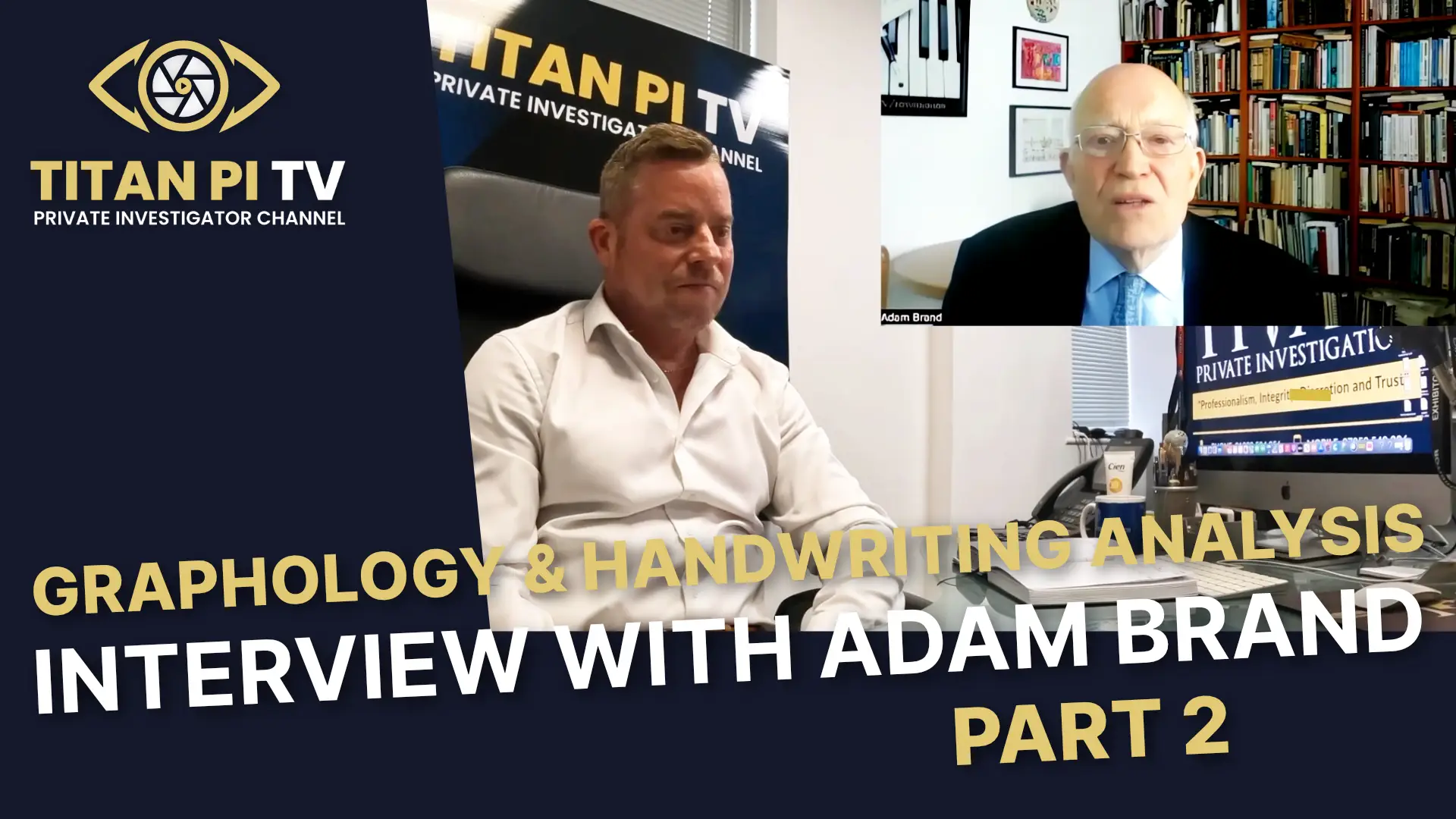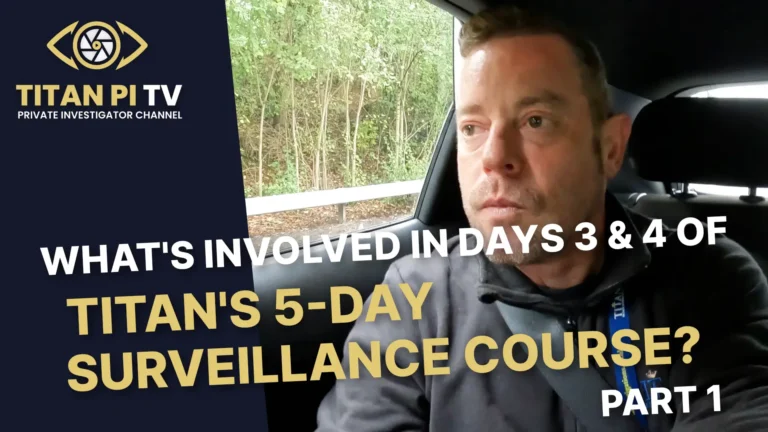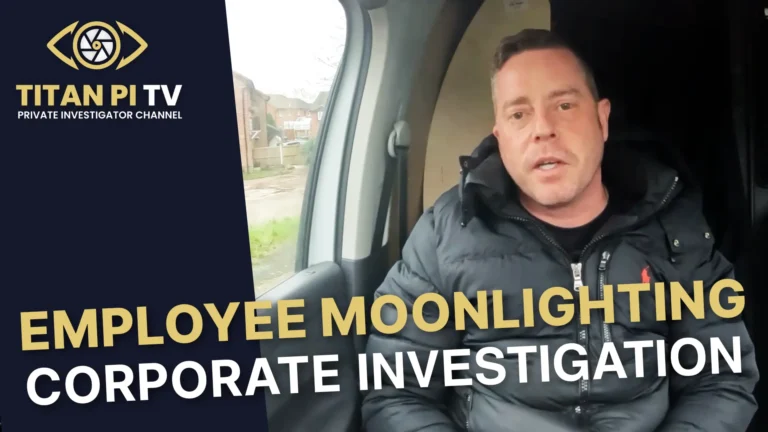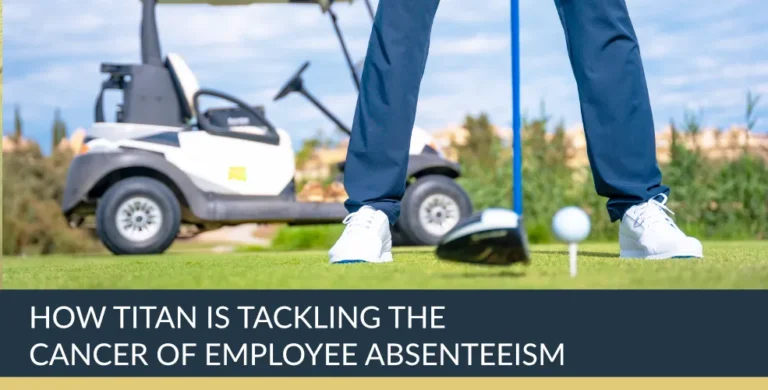Graphology and Handwriting Analysis: Interview with Adam Brand Part 2
In the latest episode of Titan PI TV, host Simon Henson continues his compelling conversation with renowned handwriting expert Adam Brand, delving deeper into the fascinating world of graphology and forensic handwriting analysis. This second part of their interview offers viewers a rare glimpse into the nuanced distinctions between different types of expert reports, the science behind handwriting analysis, and the surprising revelations that can be drawn from a few lines of script.
The Two Pillars of Handwriting Analysis Reports
The episode opens with a discussion on the two primary types of reports that handwriting experts like Adam Brand are called upon to produce: the initial letter of opinion and the more formal Part 35 CPR (Civil Procedure Rules) report. Simon Henson prompts Adam to clarify the differences, a question that resonates with many clients and legal professionals alike.
Adam explains that a letter of opinion is typically commissioned by a client who is uncertain about the authenticity of a document or signature. This report is addressed directly to the client and is designed to provide guidance based on the available evidence. It is, in essence, a preliminary assessment that lays out the facts and offers an expert’s perspective, often based on photocopies or digital scans rather than original documents.
In contrast, a Part 35 CPR report is a formal document prepared for the court, not the client. Here, the expert’s duty is to the judge, and objectivity is paramount. Adam emphasises that even if a client has paid for the report, the expert must remain entirely independent, sometimes even producing findings that do not support the client’s case. The overriding responsibility is to assist the court in reaching a fair and informed decision, not to advocate for the party who commissioned the report.
The Importance of Original Documents
A critical point Adam raises is the necessity of examining the “wet ink” original when preparing a report for court. While a letter of opinion may be based on photocopies, a Part 35 CPR report demands a higher standard of evidence. The original document allows the analyst to scrutinise the “ductus” – the flow and pressure of the pen, the borders and width of each stroke – details that are often lost in reproduction. These subtle features can be decisive in determining authenticity.
Adam recounts the challenges that arise when original documents are unavailable, citing the example of the Land Registry, which often retains only copies of signatures rather than the originals. This can create significant difficulties, especially when the authenticity of a signature could determine the ownership of a property. In such cases, the expert must clearly state in their report that the original is not available, ensuring the court is fully aware of the limitations of the evidence.
Objectivity and the Role of the Expert
Throughout the episode, Adam reiterates the fundamental shift in objective that occurs when moving from a letter of opinion to a court-ready report. The analyst’s role is not to defend the interests of the client but to provide impartial assistance to the court. This distinction is vital in maintaining the integrity of the judicial process and ensuring that expert evidence is both credible and reliable.
Simon and Adam discuss how some clients initially seek a less expensive letter of opinion to gauge whether they have a viable case. However, should the matter proceed to court, the standards become much more rigorous, and the need for original documents and total objectivity becomes non-negotiable.
Graphology: The Psychology of Handwriting
The conversation then shifts to the broader field of graphology – the study of handwriting as a reflection of personality and behaviour. Simon recalls previous discussions with Adam about the remarkable insights that can be gleaned from a person’s handwriting, including indicators of temperament, honesty, and even potential substance abuse.
Adam describes handwriting as “frozen body language,” drawing a parallel between the way we interpret physical gestures and the way we can read character traits from script. He explains that all aspects of behaviour are unified, so someone who writes quickly may also walk quickly, and vice versa. The symbolism embedded in handwriting can reveal much about a person’s underlying personality.
Recruitment and the Limits of Interviewing
One of the most intriguing applications of graphology, Adam notes, is in recruitment. There are many questions that cannot be asked directly in an interview – for example, “Are you honest?” – because the answer is always likely to be affirmative, regardless of the truth. Adam wryly observes that even he would answer “Of course I’m not” to such a question, highlighting the social nuances that make total honesty impractical in everyday life.
Handwriting analysis, however, can reveal tendencies towards dishonesty, aggression, sociability, and other traits that might not surface in a conventional interview. Adam mentions that there are around thirteen specific tests that can be applied to handwriting to flag potential issues, such as a propensity for dishonesty or difficulty working in groups. This information can be invaluable for employers, especially when entrusting significant responsibility to a new hire.
The Richness of Handwriting as Evidence
Adam is keen to stress just how much information can be extracted from even a short handwritten note. He describes the process as “astonishingly rich,” with each stroke and flourish offering clues about the writer’s state of mind, health, and even possible drug use. Forensic handwriting analysis can thus play a crucial role not only in legal disputes but also in broader contexts such as recruitment and relationship counselling.
Simon expresses his fascination with the subject, admitting that it took him some time to fully grasp the distinction between graphology and forensic handwriting analysis. Adam’s explanations have clearly illuminated the differences: while forensic analysis is focused on the authenticity of documents, graphology is concerned with the psychological and behavioural insights that handwriting can provide.
Neutrality in Handwriting Samples
To ensure the accuracy of graphological assessments, Adam recommends asking individuals to write about neutral topics, such as describing the route from their home to the shops. This approach prevents the content of the writing from influencing the analysis and ensures that the focus remains on the form and fluency of the script. It is this fluency, Adam explains, that reveals the true nature of the writer, rather than the specific words they choose.
The Symbolism of Writing and Personality
At its core, graphology is about interpreting the symbolism of writing and connecting it to personality traits. Adam’s expertise lies in decoding these symbols and providing insights that go far beyond what can be gleaned from a CV or interview. Whether assessing honesty, sociability, or potential health issues, handwriting offers a window into the soul that is both subtle and profound.
Graphology and Handwriting Analysis: Closing Thoughts
As the episode draws to a close, Simon thanks Adam for his time and insights, joking that he is relieved their correspondence is conducted via email rather than handwritten notes. Adam’s expertise has shed light on a field that is often misunderstood or overlooked, demonstrating the vital role that handwriting analysis can play in both legal and personal contexts.
Simon encourages viewers to give the episode a thumbs up and to subscribe to Titan PI TV for more in-depth discussions on investigative techniques and forensic science. As always, the episode leaves viewers with much to ponder about the hidden stories contained in the simplest of handwritten notes.
For those interested in the intersection of psychology, law, and investigative work, this episode of Titan PI TV is not to be missed. Adam Brand’s insights remind us that even in an age of digital communication, the pen – and the hand that wields it – still has much to reveal.
What’s Next on Titan PI TV?
Thank you for reading, watching or listening to this week’s blog post on Titan PI TV. If you found this information helpful, please give us a thumbs up and subscribe to our channel. We’re aiming to reach 2,000 subscribers in April, marking our two-year anniversary. Stay safe, and we’ll see you in the next episode!
Stay tuned for more insights into the world of private investigations. Until next time, stay safe and keep learning!
Titan PI TV: Uncovering the Truth, One Investigation at a Time.




















